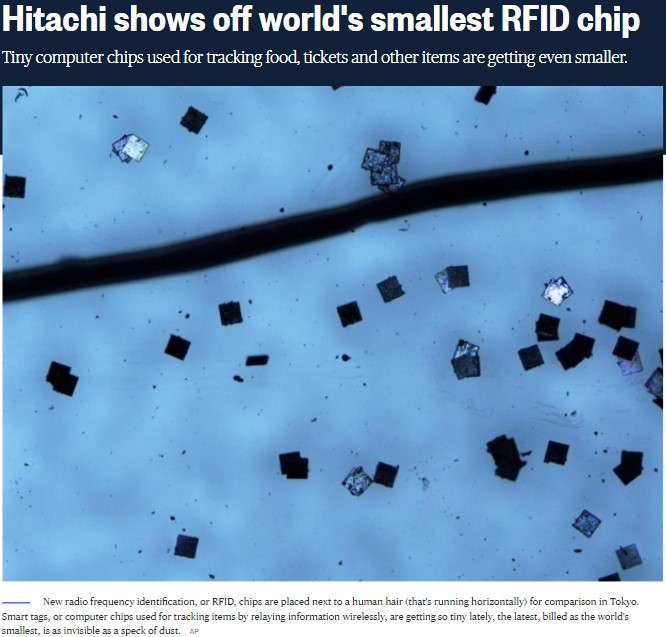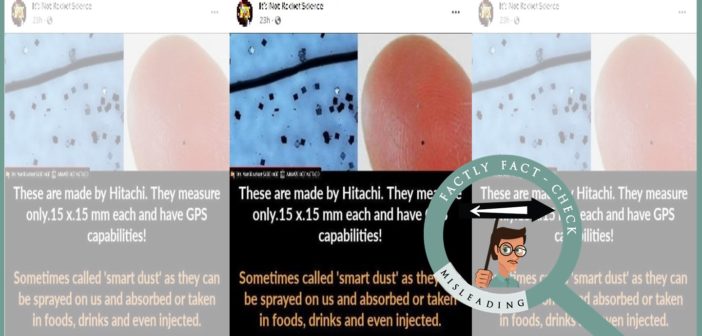A post is being widely shared on social media claiming that Hitachi had made a new chip called the ‘Smart Dust’. The post even claims that if one consumes that, it takes with it in the body. Let us fact-check the claim made in the post.

Claim: Hitachi ‘Smart Dust’ having GPS capabilities.
Fact: Hitachi did show off such a tiny ‘Smart Dust’ -like chip in 2006. It was an RFID chip which was an improper choice for injecting into a person as it would not be possible to read the chip under a layer of skin. There is no official mention of that Hitachi ‘Smart Dust’ chip having GPS capabilities or being able to work after being ingested. There are some ‘Smart Dust’-like tiny chips that could be implanted into the body for different uses, but these are mostly for tracking body processes rather than complete GPS capabilities. Hence, the claim made in the post is MISLEADING.
When we searched about Hitachi company’s ‘Smart Dust’ on the internet, a news article from 2007 about such a similar chip was found. According to the article, the Japanese Electronics maker- Hitachi- had shown off an RFID (Radio Frequency Identification) chip that measures 0.002 inches by 0.002 inches, which looks like bits of powder or a speck of dust (smart dust). However, there was no mention of it having GPS capabilities; or it being able to functionally be injected or absorbed into a human body.

Hitachi had disclosed this information about this tiny RFID chip in a news release in February 2006. Hitachi earlier developed a tiny new RFID with an embedded antenna microchip and unveiled it in a news release in 2003. According to Hitachi, these chips can be used in securities, identification, preventing counterfeiting, and tracing ingredients for safety in agricultural products. There was no mention in any of these news releases that they have GPS capabilities. We have not yet seen any official mention of such “smart dust” chip having GPS capabilities or being able to work after being ingested.

RFIDs need to be brought near special reading devices that beam energy to the chips, which then send information back to the readers. GPS stands for Global Positioning System. It uses a signal processor to receive low-power satellite signals and calculate positioning. It generally transmits information through a cellular network.
Some ‘smart dust’ like tiny chips could be implanted into the body for different uses. These are mostly for tracking body processes rather than complete GPS capabilities. According to the RFID journal, these tiny RFID chips unveiled by Hitachi are not a proper choice for injecting into a person as it would not be possible to read the chip under a layer of skin.
To sum it up, there is no evidence to state that Hitachi’s 2006 ‘Smart Dust’ RFID chip has GPS capabilities or can be functional after ingested into a human being.



